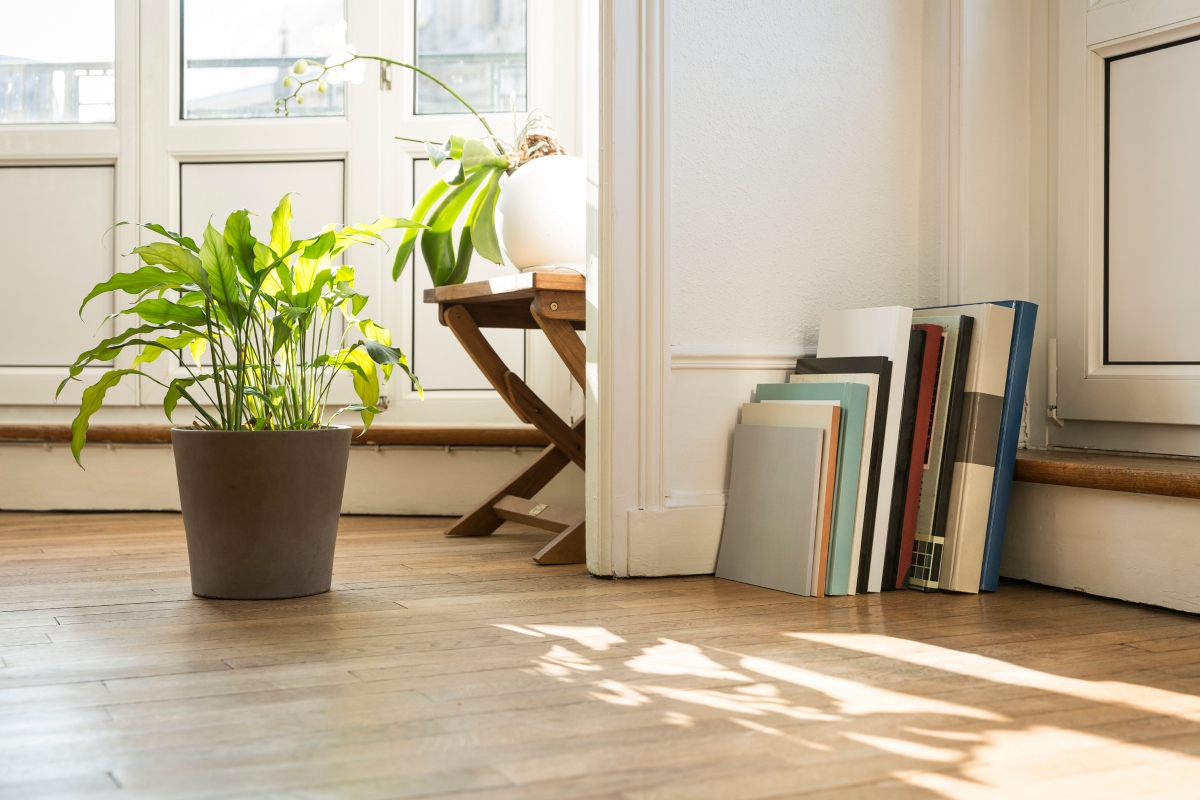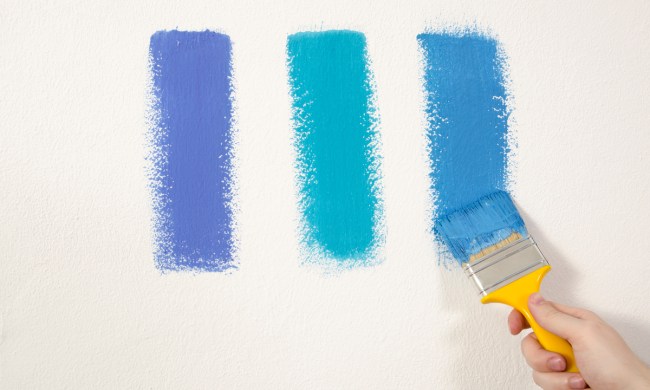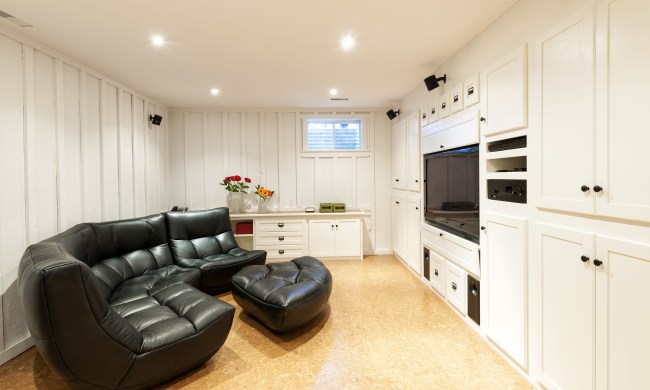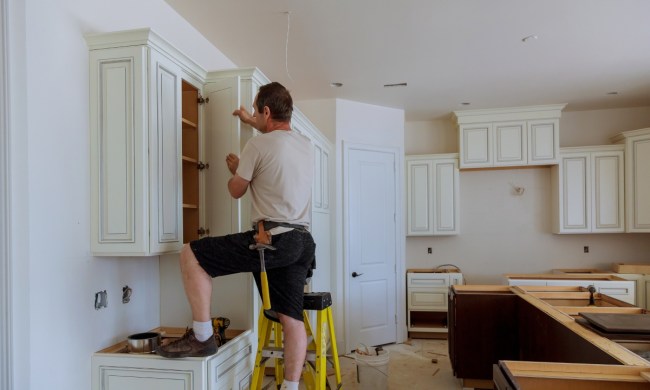
Bamboo flooring is an ultra trendy flooring option. The light wood feels airy and natural in many interior designs, making it a fan favorite. But how is bamboo flooring different from hardwood? How does it compare to other flooring options?
We’ll discuss everything you need to know about bamboo flooring so you can make the right choice for you and your family.

What is bamboo flooring?
Bamboo flooring is made by using bamboo stalks and turning them into planks. While the process will change depending on the type of bamboo flooring you choose, it is a more natural flooring than a laminate alternative. Additionally, bamboo flooring is very trendy and stylish. The wood comes in many light shades of amber and blonde, bringing a light and bright feel to any space. However, thanks to a process called “carbonizing,” which puts bamboo planks under high heat, you can also find darker shades of bamboo flooring available to purchase.

There are different types of bamboo flooring
Before you set out to find the perfect bamboo flooring for your home, it’s important to know that there are a few different types to choose from.
Stranded bamboo
Stranded bamboo is manufactured by shredding bamboo stalks and then compressing the strips together with resin or heat to create a sheet. This sheet of bamboo wood is then cut into planks that can either fit together via tongue and groove or float atop an underlayment. One benefit of stranded bamboo flooring is its versatility and that it’s available in various colors.
Horizontal bamboo
Horizontal bamboo is made by shredding bamboo stalks and gluing the strips together to create planks. This differs from the stranded bamboo we mentioned above because the horizontal bamboo’s process involves glue rather than heat. Horizontal bamboo floor planks aren’t as durable as stranded bamboo. However, their “grain” is notable, often highlighting the individual stalk fibers, creating a unique look.
Engineered bamboo
Engineered bamboo is made by adhering a layer of bamboo to an MDF or plywood core. It’s manufactured similarly to hardwood flooring and is sold in tongue-and-groove planks that lock together. While this is the least expensive bamboo flooring option, it’s also the least durable. Additionally, due to the manufacturing process, this bamboo flooring cannot be refinished later on.

How much does bamboo flooring cost?
Bamboo flooring is similarly priced as hardwood flooring. You can expect to spend about $2 to $8 per square foot on planks alone. If you factor in material and installation costs, you can expect to spend up to $10 per square foot.

Is bamboo flooring eco-friendly?
Compared to other flooring options, bamboo is a more eco-friendly and renewable resource. Where hardwood comes from trees, which can take many years to mature, bamboo grows quickly and can replenish itself easily as it is harvested. This makes it a great choice for those looking for more environmentally conscious flooring solutions.
However, the manufacturing process for bamboo flooring is similar to that of other types of flooring, meaning its carbon footprint will not be zero. Additionally, bamboo flooring sometimes contains traces of formaldehyde due to the resin or other adhesives used in making the planks.

Installing bamboo floors
Installing bamboo floors is similar to installing other hardwood floors. Many DIYers favor this because of the easy tongue-and-groove interlocking system of wood planks. Bamboo planks can also be glued or nailed together and usually rest on an underlayment that sits between the subfloor and bamboo flooring.

Maintaining bamboo floors
Cleaning
Cleaning is simple with bamboo flooring. Dusting, vacuuming, and light mopping are safe. Just be sure to use a bamboo or wood floor cleaner.
Water damage
While bamboo flooring is more water resistant than hardwood, it is still a natural material that can warp and rot if there is too much standing water. Additionally, humidity can also affect the wood.
Scratching
Bamboo flooring is fairly scratch resistant. It’s considered harder and more durable than some hardwoods. Also, if your bamboo flooring becomes scratched, you can sand and reseal the planks to correct the damage. However, if you choose engineered bamboo flooring, it’s important to understand these cannot be refinished.
Discoloration
Direct sunlight can discolor and fade bamboo flooring. Many flooring experts recommend using blinds or curtains to protect bamboo flooring from discoloration. High foot traffic and frequent use will also wear down bamboo flooring over time, similar to other wood flooring options.
Shrinking, cracking, and swelling
Bamboo flooring is more sensitive to humidity changes than hardwood. In climates with high humidity, bamboo planks can swell and warp. In low humidity, bamboo planks may become dry and brittle, cracking and shrinking, which can affect their appearance. If your home experiences dramatic humidity changes or you live in a region with humidity extremes, bamboo flooring may not be the best choice for you.

Pros and cons of bamboo flooring
To recap, here are the pros and cons of bamboo flooring.
Pros:
- It is an eco-friendly material that is more renewable than other wood flooring options.
- Easy to install for DIYers.
- Bamboo flooring is easy to maintain.
- Most bamboo flooring can be refinished, stained, and sanded.
- It can increase resale value.
Cons:
- Bamboo is prone to scratching, though most bamboo flooring can be refinished to correct this.
- Toxins could be present in adhesives during the manufacturing process.
- Humidity changes can cause cracks and shrinking.
- Water damage could warp the wood.
- Bamboo is prone to discoloration when in direct sunlight for extended periods.
With so many types of bamboo flooring, most homeowners can find what works best for them and their budget. Additionally, many DIYers favor the ease of installation and maintenance of this wood flooring option. It is also a more sustainable wood flooring solution, making it a good choice for eco-conscious consumers.



